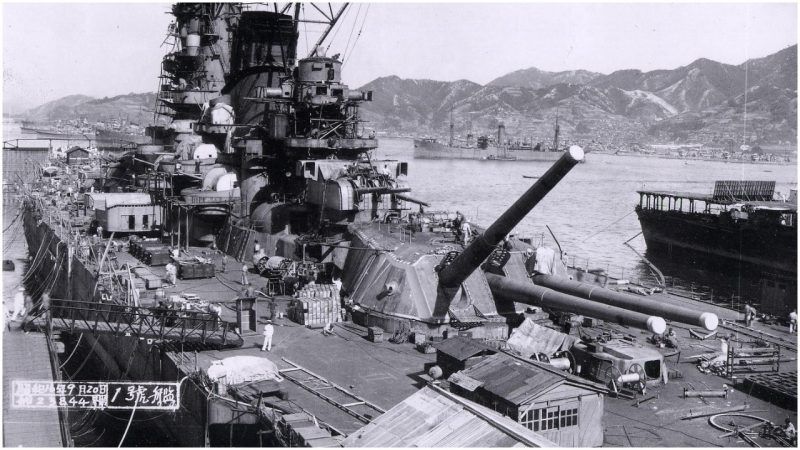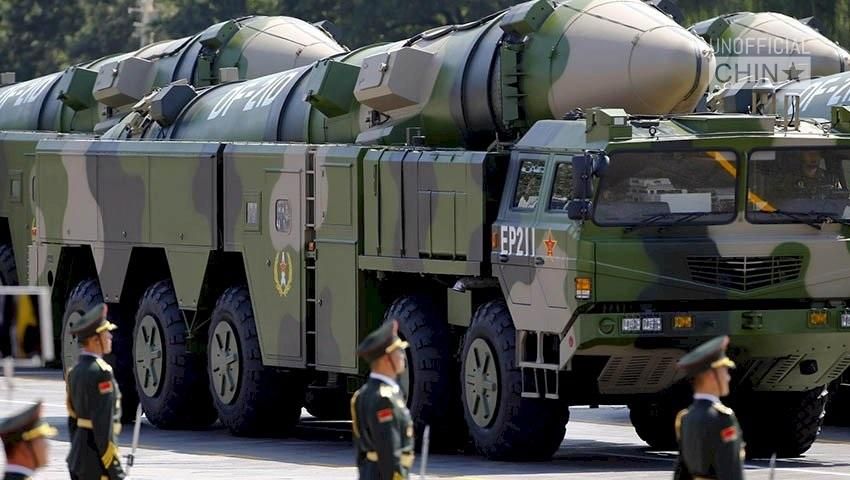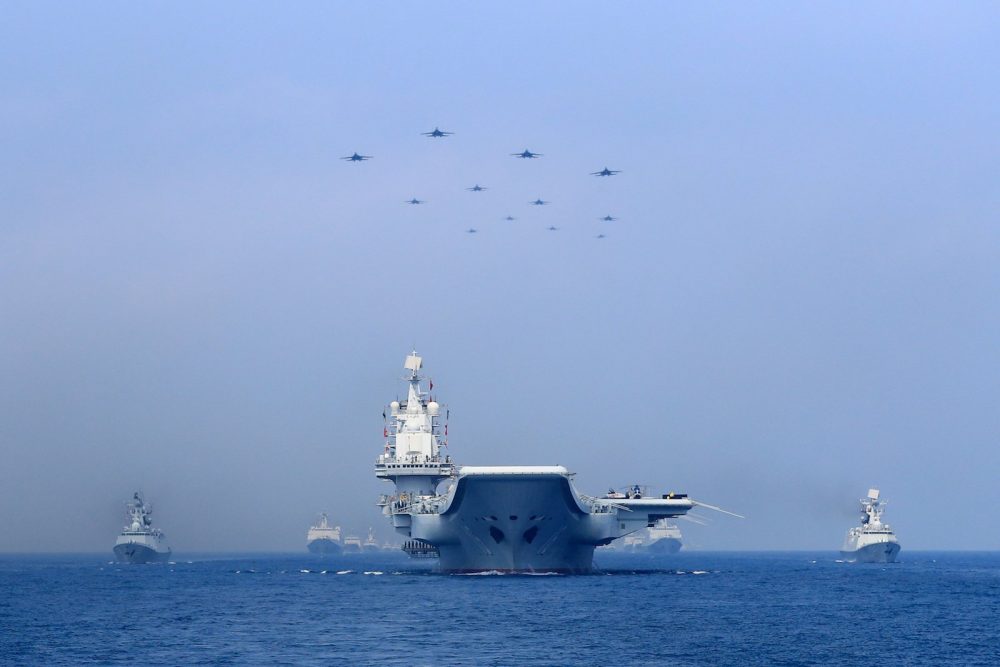Shao Wei Hua
From ancient times to the present, from animals to humans, whenever a new boss wants to replace an old boss, a conflict will surely erupt. This is a natural law and no one can defy it.
Although China has always claimed a peaceful rise, Americans never believe in it, nor do others believe it.
The general trend now is: the decline of the United States is a foregone conclusion, and the rise of China is unstoppable.
Time is on the Chinese side, so the United States must provoke conflict as soon as possible, and find something to fix China if it is fine, otherwise it will be too late.
The biggest problem in the United States is the dollar debt crisis. The US has more than twenty trillion dollars of debt.
This number is still rising. If interest rates continue to rise, the United States will soon be unable to pay interest.
Under such circumstances, why is the United States not willing to reduce military spending?
That is because superior military strength is a guarantee against debt collection.
Just like a bully in the village who owes a debt. The reason why he is fine so far is that others can't beat him up.
If others can beat him, he will be beaten and crippled. Military superiority is the basis of its hegemony.

A Yamato-class battleship—the largest ever built of its type. Made obsolete by aircraft carriers.
How does American military hegemony project itself? By relying on its aircraft carrier combat groups.
The United States is far from Eurasia, so the US Army has little effect, relying on the Navy to deter other countries, and the Navy mainly refers to aircraft carriers, which is purely an offensive weapon.
The earliest navy relied on battleships. This is the big ship cannonism.
The pinnacle of this thinking was the Japanese Yamato battleship, but the emergence of the aircraft carrier quickly eliminated the battleship. The Yamato built by Japan ’s national effort, was almost [rendered] ineffectual.
The aircraft carrier eliminated the battleship because the battleship ’s guns could not hit the aircraft carrier, and the aircraft carrier ’s carrier-based aircraft could hit the battleship. Since then, it has been the world of aircraft carriers.
The United States has 11 aircraft carrier battle groups sailing the oceans, bullying poor and weak countries everywhere, and it seems invincible. But the Chinese very cleverly invented ballistic missiles like Dongfeng-21D to attack large sea ships like aircraft carriers.
The DF-21 in action

An artist impression of the Chinese DF-21 ballistic guided missile's anti-ship capability. The simulation shows the missile launched against an aircraft carrier. The missile releases the upper stage that uses steering nozzles to position the payload on the required trajectory, while dodging missile interceptors in space... Before reentering the upper atmosphere the upper stage releases the unitary warhead protected by the reentry vehicle. This section is also equipped with decoys and pyrotechnical charges that are kicked in to avoid missile interceptors and reposition the warhead on target. According to missile experts, such terminal manoeuvring isn't necessary when nuclear warheads are used, but would be useful for conventional attack. DF-21 is likely to carry a 0.3-0.5kt nuclear warhead or several conventional warheads. Another intriguing part of this video is the upper stage 'dodging' missile interceptors, since this element doesn't have the means to respond to incoming interceptors. Hence, these manoeuvres are more likely to be pre-programmed rather than reactive.
 Like many strategic missiles, the DF21s use mobile platforms, hence they are virtually indestructible through surprise attacks.
|
This is a strength of the Chinese, because the United States does not believe it needs to study this technology.
The price of a Dongfeng-21D is 10 million US dollars, while the price of an aircraft carrier is 4.5 billion US dollars, plus all the carrier-based aircraft, a total of 10 billion US dollars.
Suppose a round of Dongfeng-21D saturation attack uses 10 missiles, which is 100 million US dollars.
I don’t have to lose a soldier, and you have to pay 5000 sailors on the aircraft carrier. How can this battle continue?
Dongfeng -21D against an aircraft carrier is even cooler than the aircraft carrier against a battleship.
Once China is able to sink an aircraft carrier, other US aircraft carriers will be quickly eliminated, just as the battleship was eliminated.
To enable ballistic missiles hitting aircraft carriers, it is not enough to rely on Dongfeng-21D.
There must be a complete set of system engineering.The most difficult part is the search, discovery and tracking of aircraft carriers.
As long as you can search, track, and lock, you have completed 90% of the tasks.
This requires the use of China's sky-wave over-the-horizon radar.
At present, China already has two sets of sky-wave radars.
As for someone saying that the United States has anti-ballistic weapons, that is nothing more than advertising.
The reason is simple. North Korea has launched so many.
As long as you can successfully intercept it once, North Korea will be over. He has no way to threaten you again.
So why doesn't the United States intercept? It is because it knows that it cannot be stopped.
The so-called anti-missile is only a propaganda slogan and has no actual effect.
Assuming that the anti-missile is true and can indeed intercept the missile, then there is a simple way.
Your price for an anti-missile missile is $ 1.5 million (Patriot 3).
Then I launch a common ballistic missile of $ 500,000. Let you intercept.
You have to launch at least three to guarantee the interception.
Then I will exchange the $ 500,000 missiles for your three $ 1.5 million missiles (total price $ 4.5 million).
This is a good deal for me.
If this battle goes on, you must go bankrupt first.
There is a more clever way. I can release a fake warhead.
The fake warhead looks exactly like the real one on the radar.
For every 1 real warhead I launch, and then 3-4 fake warheads, the radar shows nearly 100 warheads, but only 30% of them are actual warheads. How do you intercept them all?
Use a $ 1.5 million real missile to intercept a fake warhead that costs only tens of thousands of dollars?
What if my first round of volleys were all fake warheads?
In the first round, all your interceptor missiles will be used up, then you will have no ammunition.
When the United States fights against sanctioned Iraq, the logistics will be tight, not to mention a slightly larger country, which is why the United States has not attacked Iran.
Another example is that the two countries will give priority to extinguish each other ’s radar stations.
China has built many very cheap cottage radar stations.
It will also emit signals in a fight. It looks like the real one.
Your missile operates along the radio waves to blow up my cottage radar station, but my cottage radar station only cost tens of thousands of yuan, and your missile cost millions of dollars.
By the end of 2020, China's Beidou satellite system will achieve global coverage, and its self-produced aircraft carriers will also be launched. Industrial production capacity far exceeds that of the United States.
By that time, the United States will have no advantage.
Therefore, the United States must advance the time when the conflict breaks out, and must take advantage of it early while it still has an advantage.
However, China strives to postpone the time of conflict and wants to drag it to a time when its own advantages are greater.
So you will find that the United States takes the initiative every day to find faults, and China takes the initiative to deal with such challenges every day.
The author believes that although the Chinese can resolve American military superiority through "asymmetric warfare", China is weak in soft power.
China has been excessively passive in diplomacy and has been driven by foreign theories over the years.
This does not look like a big country at all.
In the real world, passively-coping countries will not be respected.
Explaining the world with your own narrative can lay down a psychological advantage for the Chinese.
A rising China must have a set of offensive theoretical frameworks, so that is the right path for China ’s renaissance.
In the past, China was incapable of projecting power. China's current capability has greatly increased.
The Chinese must have self-confidence in order to seize the opportunity and make the right decisions.
The author has been in the United States for a long time with white people.
He is aware that Americans despise the Chinese to their bones, so as long as the US government says that China has stolen American technology, all American media will believe that this is the truth.
They think that it is impossible for the Chinese to develop it themselves so the only way is to steal it.
Now that Huawei’s 5G is more advanced than that [kind of technology] in America, it is implausible that the advanced side would steal the technology from the other side, so the United States became angry and blocked Huawei.
The author found that Chinese people are deeply afraid of the United States.
For example, mainland netizens shouted and killed when talking about Japan, India, South Korea, Taiwan, and Vietnam, but they are less aggressive to the United States and lose their confidence and even basic analytical skills.
They have no confidence in defeating the United States.
In fact, there is no need to lose faith. The Koreans have survived the Korean War.
The United States is not as strong as it looks, because all the cards in the United States are already on the table, and it has little else.
Over the years, the United States has specifically bullied weak countries and caused great psychological fear to the world, but it hesitated to move against Iran.
China will be able to destroy all US satellites for the first time.
Without satellites, US combat capabilities will be reduced by more than 90%.
The author believes that 2020 and 2030 are the two [inflection] key points in time.
After 2020, the United States will not be able to win in China, and by 2030, China will fully surpass the United States, leaving little time for the United States.



